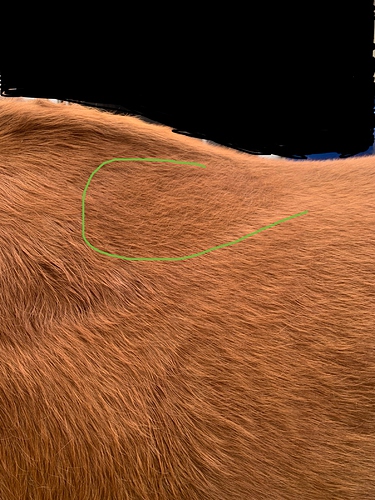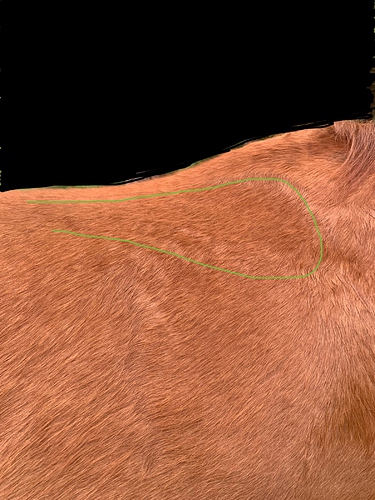Everything I read about saddle fitting guidelines talks about “even pressure” but I can’t find anything about “too much pressure”! These are musings from talking to a friend about her saddle fitting experience, though I have wondered the same things as well.
How tight should a saddle (forward flap jumping saddle, if it matters) be against the horse? For example, when you run your hand under the front panel down the shoulders, the pressure is even but it’s hard to fit your hand under there - is that an indication the saddle may be too tight on the horse? If the saddle is balanced otherwise, I’m worried going wider would tip it forward.
From my understanding this saddle has 3 fingers clearance on top and 1-2 on the sides of the withers when girthed up without a rider, but it only has about a fingers width of wither clearance farther down the gullet with a rider up (measurement taken by the rider in the saddle so I’m sure the leaning forward she had to do to get it is throwing off the clearance a bit). The rider is concerned that going wider to lessen the tightness of the panel would lose all wither clearance. She has thought about going wider and putting a sheepskin pad under it, though we are both unsure if that makes sense. The saddle got a thumbs up from the fitter 6 months ago, but the horse was just coming out of the pasture.
These are just questions that we both don’t quite understand in theory. Again, everything we find talks about “the pressure should be even”, but HOW MUCH pressure?




